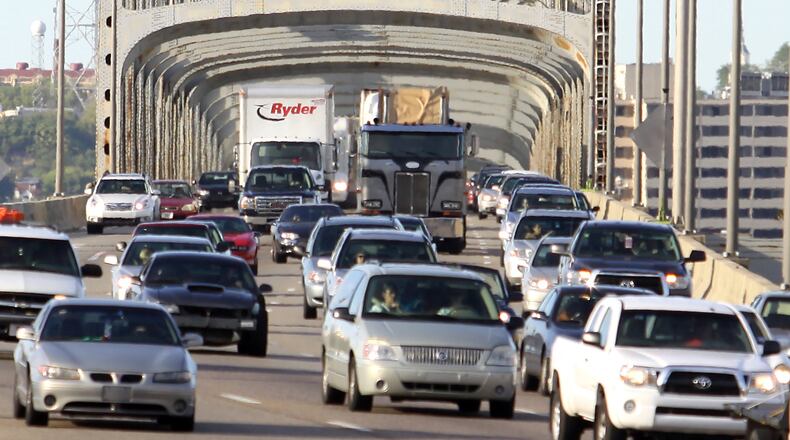No. 5 on the list is the Interstate 71 at I-75 junction north of the Brent Spence Bridge.
“We usually don’t populate that list as strongly as we have,” said Tom Balzer, president and chief executive of the Ohio Trucking Association.
No. 35 on the list is the I-75 at I-74 interchange in Cincinnati, and ranked at No. 84 is the I-75/I-71 interchange at I-275 in Cincinnati.
Other congested areas in Ohio that made the list include I-75 at U.S. 35 in Dayton (No. 50) and the I-71/I-70 interchange in Columbus (No. 67).
There are a lot of reasons for Ohio’s presence on the list, according to Balzer and others: An improved economy, higher levels of distracted driving, poor driving habits and more.
“That’s the thing about traffic,” Balzer said. “It’s all a chain reaction.”
The problem requires not just attention to infrastructure, but attention to highways in particular and expanding those roads whenever possible, Balzer said.
“Not just maintenance but expansion,” Balzer said. “The ATRI list is an excellent list to really look at: how do we fix things?”
But that comes at a high price, he added. The most recent number Balzer said he has seen for the replacement cost of the Brent Spence Bridge over the Ohio River — which carries 160,000 vehicles daily — was more than $4 billion.
“Every year it’s put off, those prices continue to escalate,” he said.
Butler County Commissioner T.C. Rogers, who has been appointed to lead the Ohio-Kentucky-Indiana Regional Council of Governments, told the Journal-News that a main goal of the board will be to get funding for the Brent Spence Bridge project.
Next month, Rogers and other OKI representatives will be going to Washington, D.C., to meet with the region’s congressional delegations.
“The stars are lining up (to acquire bridge funding),” he told the Journal-News. “This is a responsibility I am taking seriously and I’m looking forward to it.”
The ATRI ranking used an “extensive truck GPS database” from more than 600,000 commercial vehicles, as well as vehicle time, date and speed information, to arrive at the rankings.
The locations monitored in the study are “freight-significant” and carefully chosen, said Rebecca Brewster, ATRI president and chief operating officer,
“We monitor more than 250 (highway) locations,” Brewster said.
According to McClatchy news service, the Trump administration has compiled a list of about 50 infrastructure projects nationwide, totaling at least $137.5 billion in potential costs. And according to McClatchy, the Brent Spence project is on the list.
Brewster said that’s part of the value of her institute’s analysis, that it gives “decision-makers” the empirical data to make decisions about highway work.
For the full ATRI list, click here.


